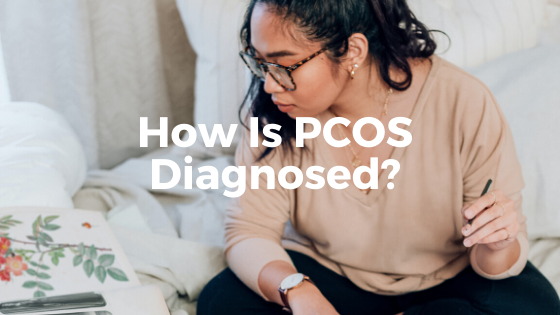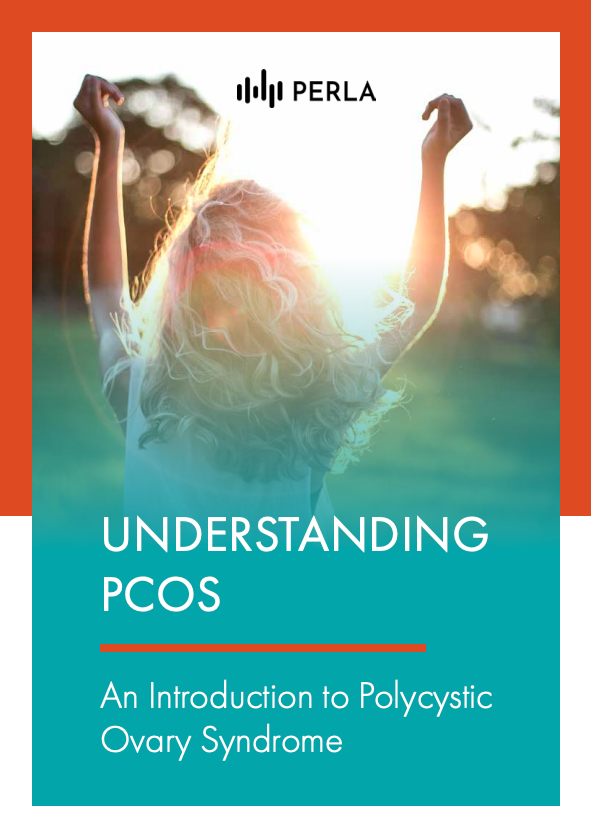How is a Polycystic Ovary Syndrome (PCOS) diagnosed? PCOS has varying symptoms and may look like many other medical conditions, which is why it’s so important that all the different symptoms are assessed. Since there is no single test to get diagnosed with PCOS, other disorders that could cause these symptoms must be ruled out first. Learn how PCOS is diagnosed and which diagnostic tests are used to identify the syndrome.
Diagnosis of PCOS
The diagnosis of PCOS is usually made by a medical specialist such as a reproductive endocrinologist (a physician that specializes in hormones), or a gynecologist/OB-GYN. The goal of the diagnostic process is to confirm the diagnosis, rule out other underlying disorders, and screen for cardiovascular risks and other complications. While there are several diagnostic criteria according to which practitioners diagnose PCOS, the majority of practitioners use the 2003 Rotterdam criteria.1
The Rotterdam Criteria
The most widely accepted criteria for diagnosing PCOS was set in Rotterdam during a consensus meeting of the American Society of Reproductive Medicine (ASRM) and the European Society of Human Reproduction and Embryology (ESHRE).2
In a nutshell, a diagnosis can be made if two of the three following signs and symptoms are present:
- Infrequent ovulation (oligo-ovulation) or lack of ovulation (anovulation) for an extended period
- Hyperandrogenism: High levels of androgens in the blood
- Polycystic Ovaries: Many small follicles (12 or more) in the ovaries and/or increased ovarian volume (>10ml)
Evaluation and Tests for PCOS
Initially, your doctor will ask about your concerns and symptoms, review your medical history, and assess your physical symptoms such as weight, BMI (body mass index), and skin and hair changes. They will also ask questions about your period and its regularity.
Your doctor may also order blood tests to measure hormone levels and exclude other medical conditions with similar symptoms. They may order a transvaginal ultrasound to check for cysts and other reproductive abnormalities. However, cysts are not always visible so this is not always done.
Below, we’ll discuss the three major diagnostic features of PCOS: oligo- or anovulation (infrequent ovulation or lack of ovulation), hyperandrogenism, and polycystic ovaries (PCO).
Menstrual Dysfunction (Anovulation or Oligo-Ovulation)
Absent (anovulation) or infrequent ovulation (oligo-ovulation) is the first diagnostic criteria for PCOS. Infrequent ovulation causes irregular menstrual periods. It is characterized by fewer than six to eight menstrual cycles per year.4
If the ovary fails to release an egg during a menstrual cycle, the lining of the uterus (endometrium) may become thicker and shed irregularly. This can lead to heavy or prolonged bleeding, and can increase your risk of developing endometrial overgrowth (endometrial hyperplasia) or endometrial cancer.
Hyperandrogenism
Also known as hyperandrogenemia, this condition is characterized by high levels of male hormones in the blood. There is no clear specification as to which particular hormone or group of hormones should be measured. According to recent guidelines, checking for the levels of serum testosterone and free androgen index (FAI) are the best tests for diagnosing biochemical hyperandrogenism.5
Your doctor might also suggest checking for one or more of the hormones below:
- Dehydroepiandrosterone sulfate (DHEA-S)
- Sex hormone-binding globulin (SHBG)
- Androstenedione
- Follicle-stimulating hormone (FSH)
- Luteinizing hormone (LH)
To exclude other conditions that have similar symptoms to PCOS, your doctor may measure the levels of:
- Prolactin
- Thyroid-stimulating hormone (TSH)
- 17-hydroxyprogesterone
Your doctor will also check for physical signs that are suggestive of high androgen levels (clinical hyperandrogenism); these symptoms are often enough to determine if there’s androgen excess.
- Inflammatory acne
- Hirsutism or male pattern hair growth
- Male-pattern balding
Polycystic Ovaries (PCO)
A transvaginal ultrasound scan is performed to check for the appearance of the ovaries. Your doctor will look for the following signs of PCO:6
- an increase in size of one or both ovaries (greater than 10 ml volume)
- 12 or more “cysts” or follicles on one ovary, measuring 2 to 9 mm in diameter.
Having polycystic ovaries alone does not indicate the presence of PCOS. It should come together with menstrual irregularities and/or clinical and biochemical symptoms of hyperandrogenism. If you already meet these two criteria, and there’s no immediate plan to get pregnant, an ultrasound may not be necessary.
Tests for Long-term Complications
Unmanaged PCOS has long-term risks to health. It has been linked to metabolic dysfunction (including symptoms such as sleep apnea, hypertension, insulin resistance, increased cholesterol and triglycerides), infertility, and endometrial hyperplasia.
To assess PCOS-related metabolic risk factors, your doctor may conduct additional tests, including but not limited to glucose tolerance blood test and screening for symptoms of sleep apnea and mood disorders.7
When Should You See a Doctor?
If you suspect you have PCOS or are experiencing any of the symptoms of PCOS (see here), let your doctor know. They will refer you to a specialist, specifically a gynecologist/OB-GYN or a reproductive endocrinologist. Follow the advice of your doctor prior to and during a procedure or test, and during treatment. The initial consultation is the best time to ask all of your questions about the diagnostic procedures for PCOS and how to best manage your symptoms.
Sources:
- Pal L. Polycystic Ovary Syndrome: Current And Emerging Concepts. New York: Springer; 2014.
- Revised 2003 consensus on diagnostic criteria and long-term health risks related to polycystic ovary syndrome (PCOS). Human Reproduction. 2004;19(1):41-47. doi:10.1093/humrep/deh098
- Barbierri R, Ehrmann D. Patient education: Polycystic ovary syndrome (PCOS) (Beyond the Basics). UpToDate. https://www.uptodate.com/contents/polycystic-ovary-syndrome-pcos-beyond-the-basics. Published 2020. Accessed May 10, 2020.
- Welt C. Patient education: Absent or irregular periods (Beyond the Basics). Uptodate.com. https://www.uptodate.com/contents/absent-or-irregular-periods-beyond-the-basics. Published 2020. Accessed May 10, 2020.
- International Evidence-Based Guideline For The Assessment And Management Of Polycystic Ovary Syndrome 2018. Melbourne; 2018. https://www.monash.edu/__data/assets/pdf_file/0004/1412644/PCOS_Evidence-Based-Guidelines_20181009.pdf. Accessed May 9, 2020.
- Kriedt KJ, Alchami A, Davies MC. PCOS: diagnosis and management of related infertility. Obstetrics, Gynaecology & Reproductive Medicine. 2019;29(1):1-5. doi:10.1016/j.ogrm.2018.12.001
- Williams T, Mortada R, Porter S. Diagnosis and treatment of polycystic ovary syndrome. Am Fam Physician. 2016;94(2):106-113.


